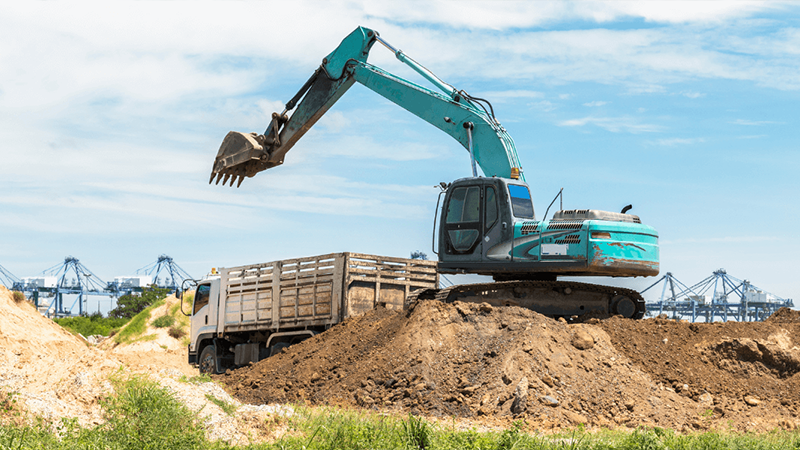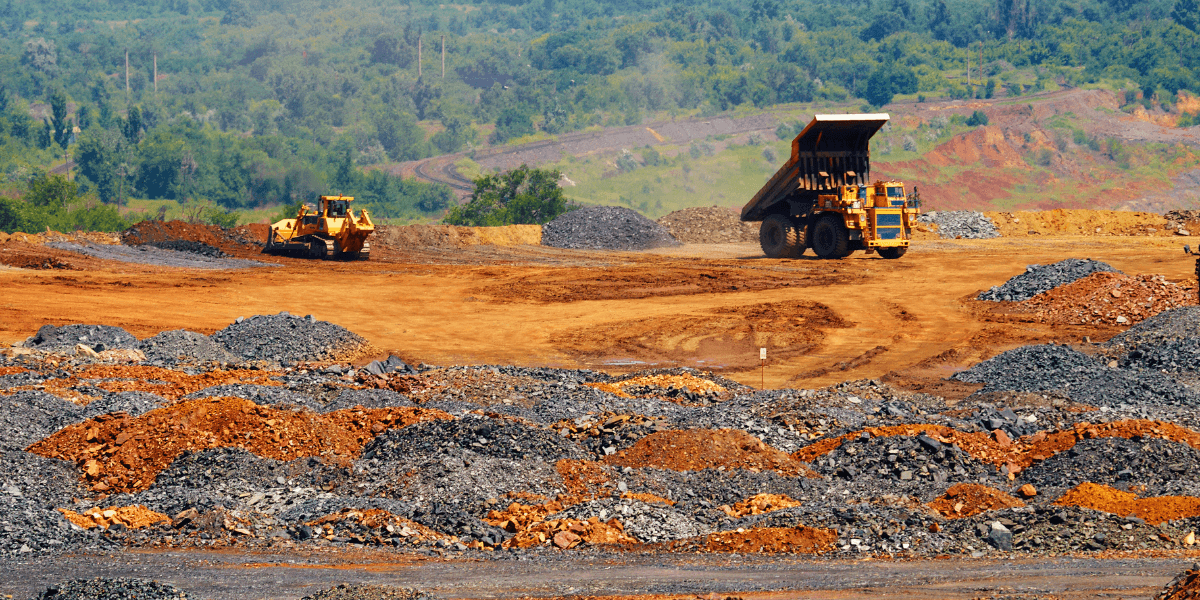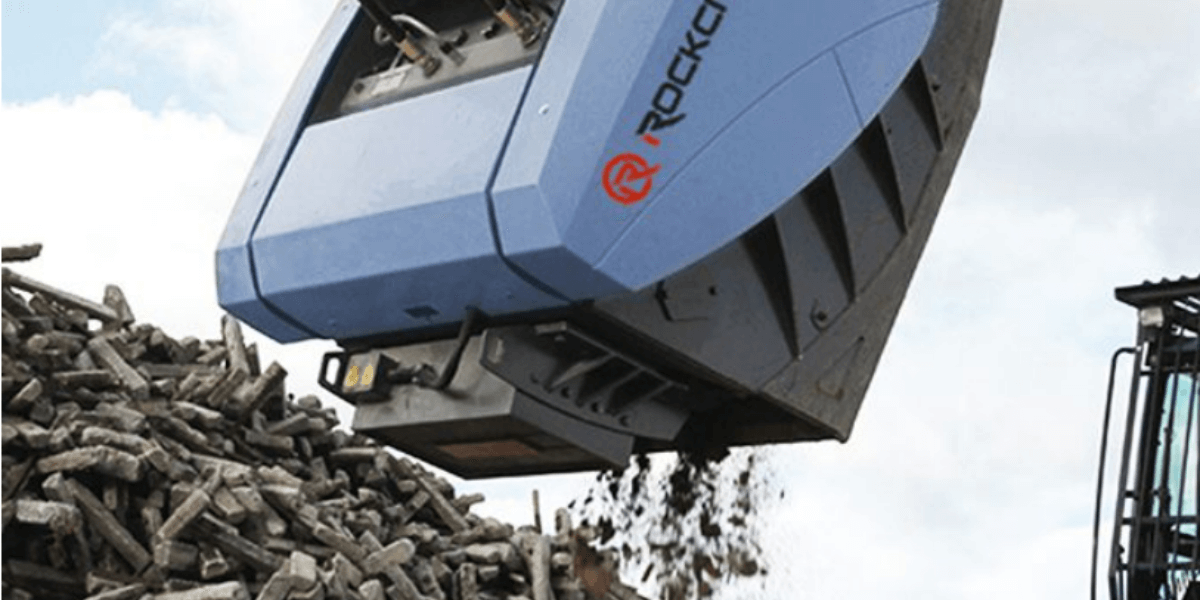What Happens to Excavated Soil During Construction?

What happens to excavated soil during construction? While the focus is often on the building itself, the tons of soil and rock unearthed during excavation play a key role in shaping the project.
Handling this material impacts everything from timelines to costs, and how it's managed can make or break a project's efficiency. Some soil is reused as fill, some are treated for contamination, and larger debris often gets broken down using tools like a rock crusher attachment.
In this blog, we’ll take a closer look at how construction projects manage excavated soil, deal with waste, and implement smart, sustainable practices that benefit both the project and the environment.
Key Takeaways
- Effective excavated soil management through reuse, recycling, and proper disposal minimizes waste and keeps projects on track.
- Contaminated soils need thorough testing and treatment to ensure safe handling and prevent environmental damage.
- Sustainable practices in managing excavated soils reduce reliance on landfills and contribute to a greener construction process.
Excavation: A Necessary Step in Construction
Excavation is the foundation of any construction project, where tons of excavated soil, rock, and clay are removed to prepare the construction site for foundations, basements, and utility lines. This stage is all about managing these materials effectively.
Clean soil is often reused as fill material on the same site or taken to a fill site, while contaminated soil may need special treatment or disposal at dedicated facilities.
Types of excavation
Not all excavations are the same, and each type involves different challenges and materials.
- Trenching: Involves digging long, narrow cuts into the earth, typically for utility lines like water, gas, and electricity. Trenching creates large amounts of excavated soils that can be reused for backfilling or removed entirely, depending on the soil quality.
- Tunneling: Used for underground transportation systems or pipelines, especially in urban areas. Tunneling produces both soil and rock, which require precise handling to ensure they don’t disrupt other parts of the project.
- Dredging: A method used in marine environments to clear silt, sand, and mixed rock from water bodies to ensure waterways are navigable. The excavated material may be repurposed for land reclamation or managed to prevent environmental damage.
Handling Excavated Soil: Where Does It Go?

When a construction project kicks off, piles of excavated soil start to accumulate. Managing this material efficiently is key to keeping the project on track, reducing soil waste, and minimizing any negative impact on the environment.
Here’s how contractors handle the massive amounts of excavated soils and make decisions about reuse, storage, and treatment.
Temporary storage on-site
At most construction sites, the soil is often stored on-site temporarily until its final use is determined.
However, letting it sit out in the open isn’t an option—rain, wind, or runoff can cause erosion or spread contaminants. To prevent this, contractors cover the soil with tarps or geotextile fabrics to keep it stable and reduce the risk of pollution.
Reuse and recycling of excavated material
Managing excavated soils goes beyond moving dirt around. Smart contractors find ways to reuse this material and keep soil waste to a minimum.
Fill material for other projects: Clean, uncontaminated soil can be repurposed as fill material for other parts of the project or transported to different sites or other construction projects.
This approach follows the principles of the circular economy by reducing waste and maximizing the use of available resources. Contractors can repurpose excess soil for landscaping or large-scale reclamation projects, which makes this a vital element of sustainable construction.
Compaction for foundations: Materials like sand, gravel, and rock from excavation form a solid foundation when compacted, which gives the building or infrastructure unmatched stability.
Compaction maximizes the use of excavated material and strengthens the base, which enhances hydraulic conductivity and guarantees long-term durability.
Recycling of excavated material: Recycling plays an essential role in managing excess material. Excavated materials like concrete and demolition waste often find new life in the production of construction materials such as roads or walkways.
This approach reduces the amount of material sent to landfills while supporting more sustainable building practices across projects.
Environmental precautions
During excavation and soil treatment, contractors enforce strict environmental precautions to prevent any contamination from leaving the construction site. Handling contaminated soil carefully is essential to stop harmful pollutants from reaching nearby areas, water sources, or local communities.
Certified facilities ensure the safe disposal of hazardous materials, but contractors must remain alert throughout the process. Every step, whether it's soil testing, removal, or treatment, requires precision to safeguard the environment and avoid any risks.
Dealing with Contaminated Soil: Treatment and Disposal
Managing contaminated soil on a construction site demands smart strategies to protect the environment and keep the project on track.
Contractors assess the soil, treat it when possible, or dispose of it safely to ensure risks are minimized and costs are controlled while maintaining project momentum.
Testing for contamination
Before any action is taken, data collection and soil testing are crucial. Contractors must determine if the excavated soil contains hazardous materials like chemicals, demolition waste, or industrial residues.
This step identifies the current status of the soil—whether it can be reused after treatment or if it needs to be removed. Testing for particle size and pollutant levels is essential to prevent environmental harm and ensure the right management strategy is chosen.
On-site treatment
If testing reveals contamination, the ideal solution is on-site treatment. This method is often more efficient and cost-effective than off-site disposal.
Options like chemical stabilization can neutralize harmful elements by adding reagents that render pollutants harmless. Thermal treatment is another effective method wherein high heat is used to remove toxins from the soil.
RockZone Americas' soil mixing tools make on-site remediation even more efficient. With the world’s widest range of hydraulic soil mixers, these tools handle everything from compacted soils to sludge stabilization.
Once treated and confirmed safe, this treated soil can be reused on-site as fill material. This keeps the project environmentally sustainable and reduces costs linked to transportation and disposal.
Landfill disposal
When contaminated soil cannot be treated on-site because of its toxicity or local facilities, disposal at certified landfills becomes necessary.
These specialized landfills are equipped to handle hazardous materials safely by preventing contamination from spreading into water supplies or surrounding environments. However, this process comes with increased costs for transportation, landfill fees, and potential delays in the project timeline.
While landfill disposal ensures the safe removal of toxic materials, it also adds to the environmental burden by increasing waste. For this reason, on-site solutions are always preferable when possible.
The Challenges of Transporting Excavated Soil
Moving excavated soil from a construction site to another location brings its own set of hurdles that can significantly impact a project’s budget. These challenges can be broken down into two key areas:
Transport costs and logistics
The cost of moving excavated soil adds up quickly—trucking fees, fuel, labor, and equipment are all part of the equation. If contaminated soil is involved, specialized transport and disposal at certified landfills increase the price.
Different materials like silt, sand, and rock also affect load sizes and transportation costs. Poor planning can cause delays, which inflates both time and expenses.
Funding acquisition
For projects dealing with large volumes of excavated soils or hazardous materials, funding acquisition becomes critical. Special permits and environmental protections may drive up costs, which makes it necessary to secure additional funding.
Some projects may qualify for government or environmental grants to cover soil removal and safe disposal, but securing this funding early is key to staying on budget.
Excavation Made Easy with RockZone Solutions

Dealing with mountains of excavated soil and debris on your construction site can be overwhelming and costly. At RockZone Americas, we provide game-changing solutions like the Rock Crusher and our Rock Screeners and Soil Mixers to simplify the process.
Our powerful equipment grinds through tough rock, clay, and concrete with precision, cutting down project time while minimizing construction waste. From breaking down materials for reuse to prepping them for easy transport, our innovative attachments ensure you handle your soil and debris quickly and efficiently—keeping your project on track and on budget.
Make your excavation process smoother—call RockZone Americas today.
Summary
Efficiently managing excavated soil helps keep your construction site running smoothly, on budget, and environmentally responsible.
Clean soils and rock can be reused as fill or repurposed for other projects, while contaminated materials require proper treatment or disposal. This reduces construction waste and limits the need for landfills, which makes the entire process more sustainable.
Sustainable soil management is the way forward. By leveraging innovative tools and focusing on recycling and reuse, contractors can deliver successful projects while minimizing their environmental impact. Smarter methods lead to greener outcomes.
Frequently Asked Questions
What is the purpose of excavation in construction?
The purpose of excavation in construction is to clear the construction site by removing excavated soils, rock, and other materials to prepare the land for building.
This process ensures a stable foundation for foundations, basements, utility lines, and other essential structures that support the entire project.
What happens to the volume of dirt when it is excavated?
When soil is excavated, its volume increases due to loosening and aeration, often referred to as "swell."
The expanded excavated soils take up more space than they did in their compacted state, and the final volume is typically determined by the type of material, such as clay, sand, or rock.
How do you remove excavated soil?
Excavated soil can be removed from the construction site by hauling it to a different site, using it as fill for other projects, or transporting it to certified disposal facilities. In some cases, contractors may reuse or recycle the soil on-site if it's clean or treat it if contaminated.
What does excavated soil mean?
Excavated soil refers to the soil, rock, or debris that is unearthed and removed during the excavation process at construction sites. This material can vary in composition, such as sand, gravel, or clay, and may be reused, recycled, or disposed of depending on its condition.
